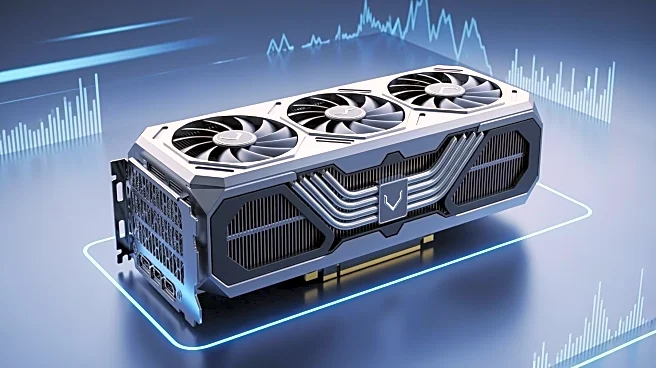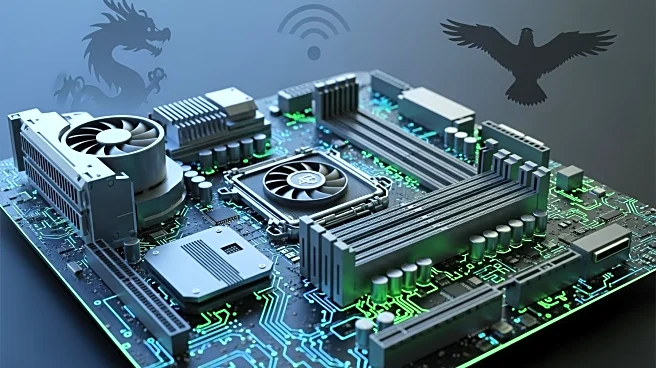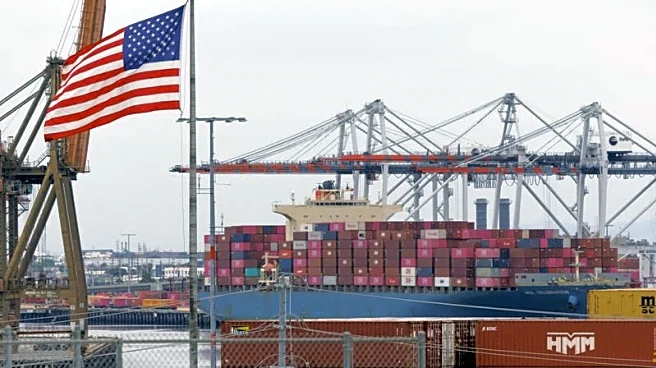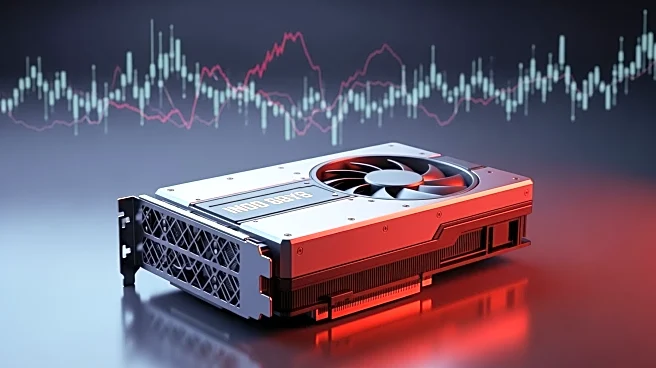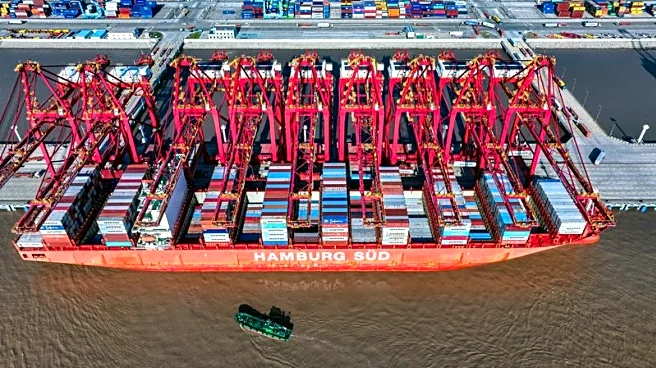What's Happening?
Nvidia CEO Jensen Huang recently spoke at the Citadel Securities Future of Global Markets 2025 conference, highlighting the challenges Nvidia faces due to ongoing U.S.-China trade tensions. Huang emphasized that Nvidia is currently unable to sell its
AI hardware in China, having gone from a 95% market share to 0% in the country. This situation arises from U.S. export bans on AI chips to China, which were initially easing but have stalled amid escalating trade disputes. President Trump has announced a 100% tariff on Chinese goods related to a rare earth metal dispute, further complicating the trade landscape. Nvidia's efforts to penetrate the Chinese market are hindered by these geopolitical tensions, with Chinese authorities pausing production of Nvidia's H20 GPUs due to security concerns.
Why It's Important?
The trade tensions between the U.S. and China have significant implications for Nvidia and the broader tech industry. As a leading AI hardware provider, Nvidia's inability to access the Chinese market, which houses about 50% of the world's AI researchers, represents a substantial loss. This situation not only affects Nvidia's revenue but also impacts the global AI development landscape, as American technology is sidelined in one of the largest markets. The ongoing trade disputes could lead to increased competition from Chinese companies like Huawei, which may capitalize on Nvidia's absence. The broader economic implications include potential disruptions in the supply chain and increased costs for consumers due to tariffs.
What's Next?
Nvidia's future in the Chinese market remains uncertain as trade tensions persist. The company will likely continue to monitor the situation closely, hoping for a resolution that allows it to re-enter the market. Meanwhile, Nvidia may need to explore alternative strategies to mitigate the impact of lost sales in China, such as expanding into other international markets or focusing on domestic growth. The U.S. and Chinese governments may engage in further negotiations, but the timeline and outcome of such discussions are unpredictable. Stakeholders in the tech industry will be watching closely for any policy changes that could affect trade dynamics.


